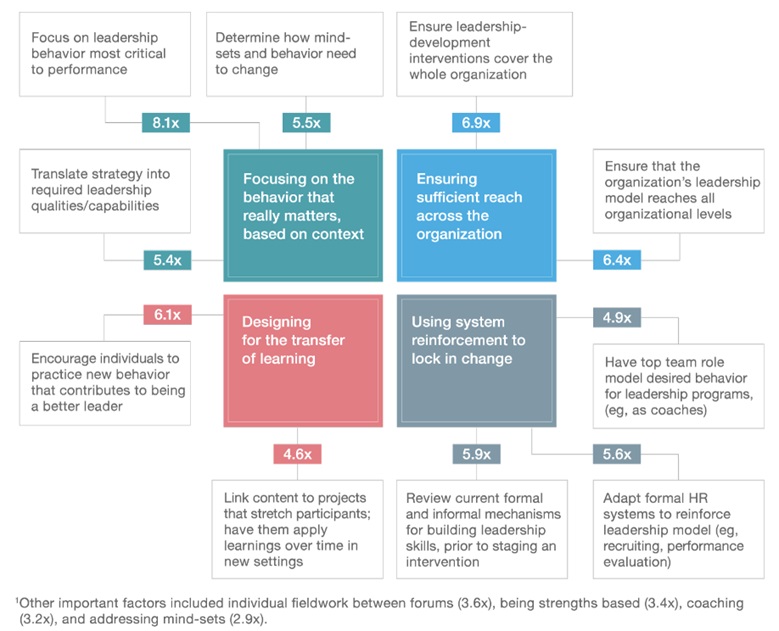Spotting the Void in Your L&D Toolbox: How can you tell if something is missing in your L&D program?
Shauna Carson
If you haven't recently taken stock of what information you're delivering to your employees (and how you're delivering it), it's time that you do. This article will provide some tips and tricks to help corporate organizations find what's missing in their learning and development (L&D) strategy. It will also identify current trends that you may want to consider adding to your toolbox.
It wasn't that long ago when workplace learning consisted primarily of compliance-based training. Corporate training programs delivered knowledge-based information to employees face-to-face in classrooms, and on-the-job learning and evaluation followed. As we moved from classroom-based training to online training, the approach remained similar. Employees would complete an online module and quiz to demonstrate that they understood certain concepts and would then take this information out into the field where they'd be evaluated on-the-job.
However, according to Global Human Capital Trends, 2016, from Deloitte University Press, there is an "increasing recognition among executives and HR leaders that learning must adapt to a world where employees demand continuous learning opportunities through innovative platforms tailored to their individual schedules. A new type of learning is emerging that is more 'consumer like' and that brings together design thinking, content curation, and an integrated model offering an end-to-end designed learning experience".
How to Evaluate Your L&D Strategy and Determine What's Missing
1. Listen to your learners
As indicated in the Global Human Capital Trends report, today's learners want to be continuously learning. In fact, they demand it. Learning is taking place through a wide variety of sources and devices, but organizations are still heavily investing in in-person classroom-style training, suggesting that organizations are not listening to what their learners want.
When was the last time you asked learners what they needed when it comes to learning and development? One of the easiest ways to determine if something is missing from your L&D strategy is to consult your employees. Asking this simple question can result in valuable feedback and help you to realign what you are delivering with the needs of your employees.

Source: Elucidat
Basic adult learning principles suggest that employees want the power to learn how they want, when they want, what they want and to share what's working for them with their colleagues. Yet according to a recent workplace learning report published by LinkedIn, 50% of L&D professionals find it challenging to get employees to make time for learning. Consider Malcolm Knowles' characteristics of adult learning; is your current learning program accounting for the needs of your learners? Remember, having people learn by doing something relevant to their goals makes learning more effective. When learners understand why a particular skill or piece of information is important to them and their job responsibilities, they are more likely to actively engage with the content and benefit from it.
2. Understand your L&D objectives
What are the main objectives of your organization's L&D strategy? Do you want to develop managers and leaders? Support career development? Help employees develop new technical skills? Maintain compliance? The answers to these questions will dictate what your L&D program will look like. This is an ongoing process. Your goals last year may be different from your goals this year, which will impact learning and development in your organization. In other words, what you were delivering may have been excellent based on previous objectives, but your content may need to be updated to reflect what your organization is trying to achieve today.
Understanding what's missing in your L&D strategy begins by having a clear idea of what you hope to achieve by delivering learning opportunities and training to your employees. The strategies you have in your toolbox need to align with your objectives, otherwise your learning program won't be effective and you are unlikely to see a return on investment (ROI).
3. Consider modern learning experiences
What does a modern learning experience look like? There is no one answer to this question, as it will vary depending on your L&D objectives and what your employees need. However, there are a number of approaches you can consider, some of which you may already be incorporating:
- In-house instructor-led classes
- Peer-to-peer coaching
- On-the-job training
- Online training/eLearning
- Case studies
- Simulation-based learning
- Experiential learning
- Conferences
- Certificate programs
- Tuition reimbursement
- Journals publications, books, job-aids, memos
There are probably other approaches that I've not listed above, however, before you get excited about implementing something new, ensure that you've analyzed your current strategy and that your approach meets your L&D needs.
There is an argument within the L&D industry that suggests that in-person classes/workshops aren't considered modern. I agree that this approach has been used for decades, however, I do think that lecture-based approaches are still an effective way to disseminate information and teach people. Nevertheless, the majority of learning and development takes place outside of the classroom. Research shows that roughly 70% of learning takes place on-the-job. This means that people are learning by doing or studying the examples around them at work. Another 20% of learning is achieved through coaching, where an experienced coach or mentor provides the employee with tips and pointers to help them succeed. Formal training programs account for as little as 10% of the learning that employees experience at work (70:20:10 L&D model).
What's important is that, as you evaluate what you have and what you hope to achieve, you consider all the possible ways that information can be disseminated and employees can learn. Today, a modern learning experience includes a vast array of the approaches I've identified. Take the time to see if your employees are benefiting from, and engaged in, the learning activities that you are currently delivering.
4. Leverage technology
With the influx of technology, learners are embracing digital tools to access content that helps them learn on-the-job and on the go. Technology has improved over the last few decades, enabling L&D professionals to leverage the power of multimedia to deliver content suited to the needs and learning styles of employees. Therefore, when reviewing your current training offerings, ask yourself, are you taking advantage of the technology available to you and does it make sense for your business goals.
There are two things that I notice when I speak with organizations about technological use. First, a lot of L&D programs are stuck in the past and, if they are using technology, it's only in a very basic capacity. On the flip side, an organization may be very excited about the newest technology available (think virtual reality), but not yet understand its impacts and how it can effectively be used for training purposes. When reviewing your current L&D strategy, first determine what technologies you are using. Once you have taken an inventory, next determine if they are being used effectively. Do your technological tools:
- Reinforce skills and knowledge (simulations, instructional videos, podcasts)?
- Aid in developing content (learning content management system, course authoring tools, video tools, PowerPoint)?
- Deliver content (learning management system)?
Technology is important for any L&D strategy, however, it's not always the only answer. Many organizations come to the conclusion that they either need a learning management system (LMS) or, if they have one, need a better one. In some cases, this is certainly true, however, as I have identified, there's much more to an effective L&D strategy than an LMS. It's important to consider each of the factors discussed here before assuming that you need a new LMS.
Four Approaches to Improve Your L&D Toolbox
There are a number of approaches that you could add to your current L&D program. McKinsey & Company recently published data from a 2016 survey that asked executives about the circumstances in which their L&D programs were effective and when they were not. Obviously, there is no silver bullet, however, I found the following diagram to be profound. According to their findings, four interventions appeared to matter most to organizations: focusing on the behavior that really matters, ensuring sufficient reach across the organization, designing the program for the transfer of learning, and using system reinforcement to lock in change (click here to read the full report). What's interesting is that L&D strategies that revolve around these four interventions have been proven to be effective. Therefore, you may want to consider these when evaluating and updating your own L&D strategy.

Source: McKinsey leadership-development survey of 510 executives, 2017, available here
Conclusion
This article identified four ways to help corporate organizations find what’s missing in their learning and development (L&D) strategy. It also provided some information about the types of interventions/approaches to consider when evaluating and updating your current program. It’s important that, if it has been a while since you’ve taken stock of what you have and how you are delivering information to your employees, you should spend some time doing this. Your L&D program, and the tools in your toolbox, are only as good as the objectives you set, how well you understand the needs of your learners, your ability to incorporate modern approaches, and your judicious use of technology.
📘 Ready to Elevate Your Learning Strategy?
Explore our comprehensive library of eBooks and tools on learning resource development, competency-based learning, and LMS implementation. Transform your training programs with insights from industry experts and practical templates.
Shauna Carson
Shauna graduated from the University of Toronto in 2002 with a Master of Arts in English before moving home to Calgary to work in the fast-paced, detail-oriented oil and gas industry. Now certified as a technical writer, Shauna is comfortable writing in a variety of styles, and for a variety of audiences.
